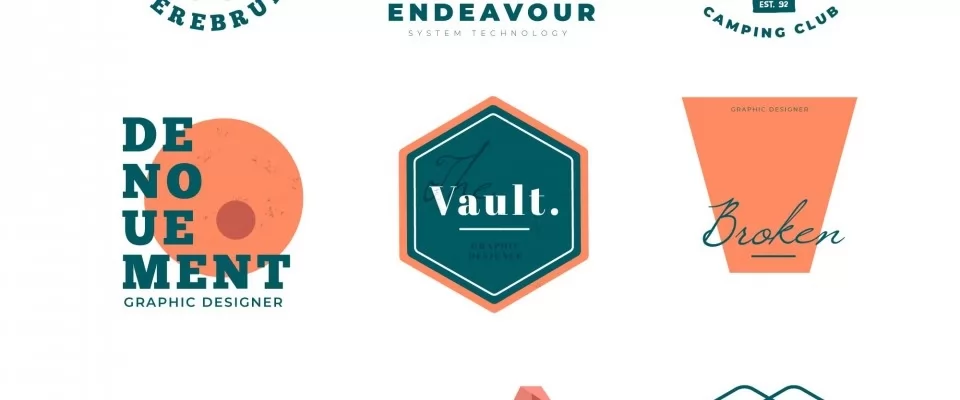A Comprehensive Guide to Logo Design: 5 Essential Steps
Creating a remarkable logo requires a well-structured design process that guarantees outstanding results. In this article, we will outline a five-step logo design process that has proven effective for many designers. While individual designers may have their own approaches, it is essential to follow a meticulous design process to efficiently and effectively complete logo projects, benefiting both your clients and your design portfolio.
Step 1: Design Brief
The design brief lays the foundation for the entire logo design process. Depending on the client, the time and effort required for this step may vary. Some clients provide a clear vision and all the necessary information, particularly if they have design experience or have worked with designers previously. However, working with non-designers, such as new entrepreneurs, often requires extracting information to create the perfect logo.
To gather crucial information, ask your clients the following questions:
- What does the company do?
- Who are the company's target customers?
- Who are the company's competitors?
- How does the company position itself in the market compared to its competitors?
- Does the company have any existing design style guides, such as colors or typefaces?
Tips for Creating a Logo Design Brief:
- Treat the design brief seriously and encourage your clients to do the same.
- Provide a design brief questionnaire or template to simplify the process for your clients and add structure.
- Develop a web page or document explaining the basics and importance of design briefs, using it as an educational resource for your clients.
- Ensure your design brief covers essential items, such as the target market, message objectives, existing design style guides, budget, and schedule.
Step 2: Research
Research is a vital component of the logo design process. Gain insight into your client's industry, considering both historical perspectives and emerging trends. Additionally, conduct visual research by examining your client's competitors' logos. Analyze the strengths and weaknesses of various designs to understand what makes a logo effective.
When it comes to industry trends, decide whether adhering to or innovating upon them benefits your client's business. While following trends may improve association within the industry, it can also lead to a stale design when the trend fades, compromising the logo's timelessness and uniqueness.
Tips for Logo Design Research:
- Utilize your client's resources, including interviews with staff members or discussions with in-house designers.
- Request a list of the client's main competitors and conduct online research to gain insights.
- Explore logo design galleries to find inspiration and conduct visual research.
Step 3: Build the Design Concepts
This step allows you to unleash your creativity and transform ideas into tangible designs. Each designer has their own approach during this phase. Your goal is to create a design that combines excellent graphics with the right message, encapsulating the complexity of a business into a simple, versatile logo suitable for various applications.
For each logo design concept, consider the following questions:
- Does this logo design work for my client?
- Will this logo resonate with the client's target customers?
- How does this logo compare to the competition?
Tips for Building Logo Design Concepts:
- Sketch out rough drafts and jot down all initial ideas, no matter how unconventional they may seem.
- Dedicate time to brainstorming and idea-generation sessions.
- Ensure your logo design concepts align with the parameters outlined in the design brief.
- Refine the most promising concepts into presentable designs.
Step 4: Feedback and Review
Take a step back from your work and allow yourself some time before reviewing it. Focus on the stronger logo design concepts while discarding weaker ones. Seek feedback from colleagues, other designers, and, if possible, your client.
Tips for Design Feedback and Reviews:
- Embrace constructive criticism as an opportunity for improvement rather than taking it personally.
- Be open-minded to the opinions of others and experiment with suggested changes.
- Analyze how and why proposed changes can enhance the current design.
Step 5: Presentation
Once you have finalized your designs, it's time to present them to your client formally. While clients may request multiple logo options, it is generally more effective to present a limited selection of the strongest concepts.
During the presentation, hope that your client will be delighted with the logo concepts you present. However, as a professional, be prepared to consider any feedback or comments they provide and be willing to go through a design revision process if necessary.
Tips for Design Presentations:
- A professional presentation, whether conducted remotely or face-to-face, is crucial.
- If possible, arrange a face-to-face meeting to explain your thought process and address any questions or concerns.
- Clearly communicate the rationale behind each design concept and how it aligns with the client's goals and target audience.
By following this five-step logo design process, you can ensure a systematic approach to create outstanding logos. Remember, there are no shortcuts to designing a great logo. Dedicate time and effort to each step of the process, and your results will be optimal. Embrace collaboration, feedback, and continuous improvement to refine your designs and deliver exceptional logo solutions to your clients.

